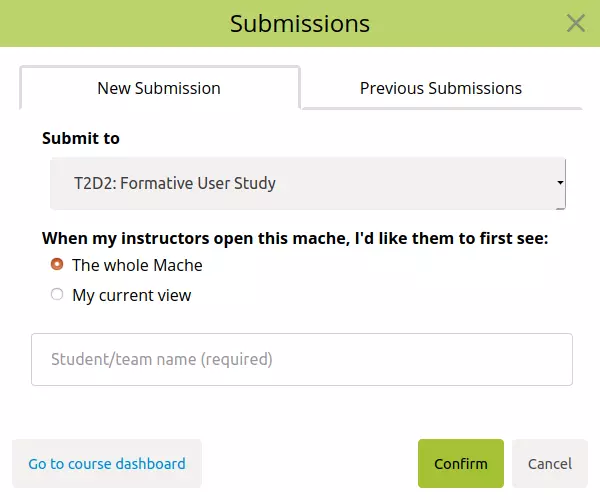ACM Publication: Design is (A)live
How can software support iterative design education?
- Academic Research & Paper Writing
- Data Collection, Analysis, & Synthesis
- User Interviews
- Full-Stack Web Development
- Node.js
- WebSockets
- MongoDB
- Google Colaboratory
- Ajit Jain
- Nic Lupfer
- Andruid Kerne
BACKGROUND
Design education frequently consists of open-ended, creative coursework that requires students to take risks, sometimes fail, and reflect on how to improve. As design students progressively develop and evaluate their solutions, their understanding of the problem improves, which improves their future solutions.
PROBLEM
Oftentimes, design instructors lean on traditional digital submission and assessment systems to evaluate their students' work. While great for more close-ended work, these systems struggle to capture design students' iterative refinement process, instead presenting only static snapshots of a student's work before a submission deadline, making it difficult for instructors to evaluate their students' process, which they value more than the end solution.
APPROACH
I used an existing collaborative design software named LiveMâché to study the iterative design habits of students, and determine how instructors interacted with their students' work. I developed functionality that allowed students to submit their work, instructors to see how a student's work changed over time, and annotate a student's work in real-time. I incorporated an email system to notify students and instructors of successful submissions. My features were deployed to two design courses (each around 15 students), one in South Korea at KAIST, and another at Texas A&M University in College Station, Texas.


Over the course of a semester, the system recorded how students and instructors were interacting with student work for later analysis. After the semester ended, I conducted semi-structured interviews with both students and instructors to find out what they thought of the functionality and whether or not they thought it helped them.
RESULTS
Instructors reported that the functionality I developed helped them feel as though they were a part of the students' design process, and helped them feel more engaged in each students' work. Students reported that my features helped them reframe how they thought about their work, transforming it into a living work that transforms over time.
That being said, both students and instructors felt that certain features (like reviewing prevous submissions) could be improved to be on par with existing digital submission and assesment systems.
In general, what we found is that integrating assessment into the ideation process enhances students' and instructors' understandings of design processes and progress. Future design systems should enable instructors to leave feedback on designs and notify students, and let students notify instructors when feedback has been resolved.
FUTURE WORK
This publication came from part of my undergraduate thesis, which is currently under embargo. Once my thesis leaves embargo, I can discuss the second semester's work, and will update this page with the remaining information.
If you'd like to read the actual paper, check it out on ACM's Digital Library!